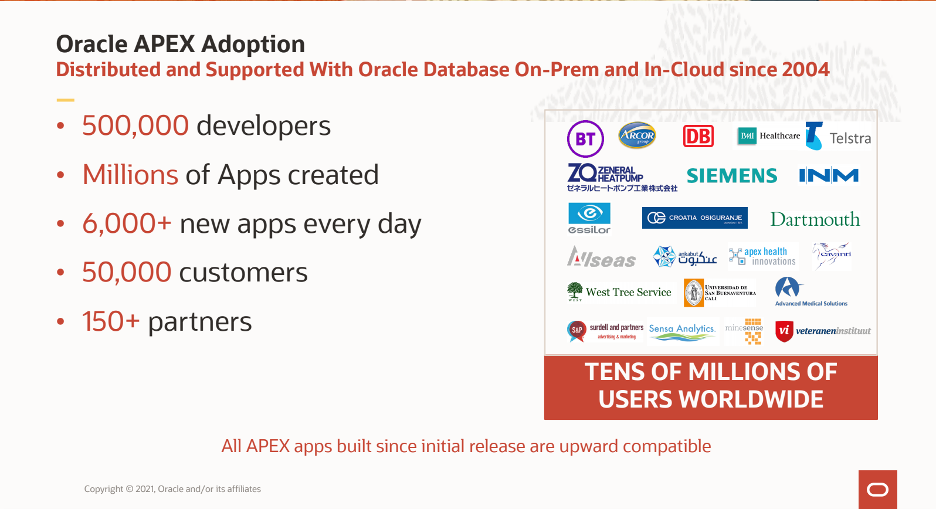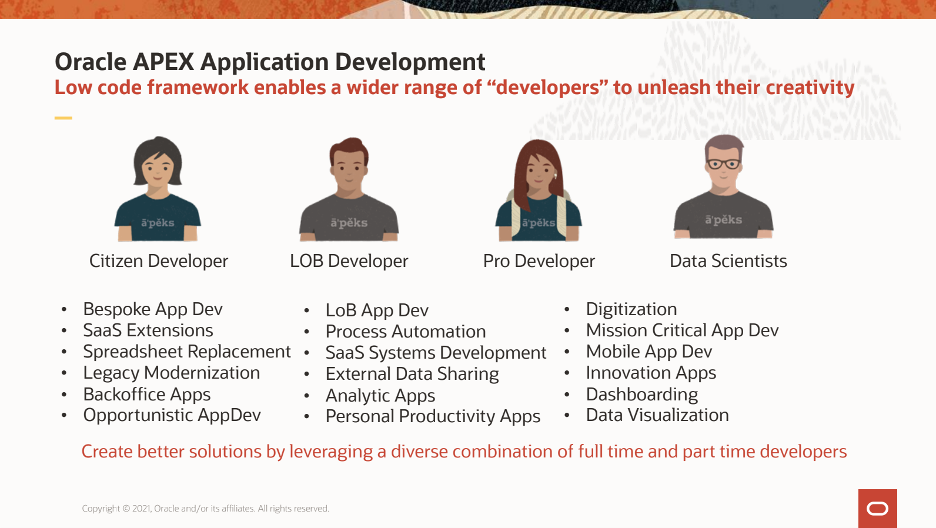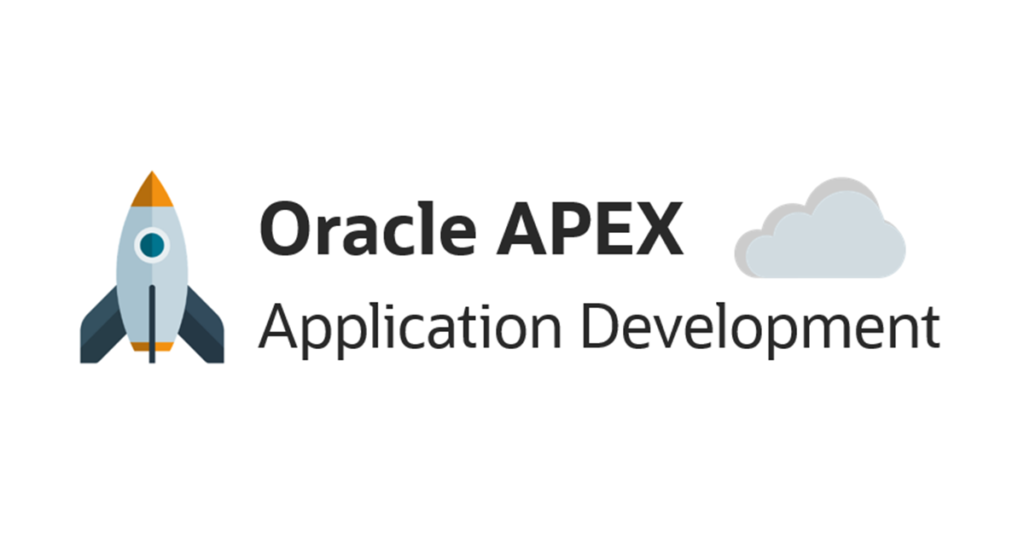As more companies look to enhance their digital prowess via in-house software development, Oracle is betting its new low-code APEX Cloud Service can become enormously popular due to its power, speed, security, and pricing.
On top of those attributes, Oracle APEX is already widely used around the world by more than 50,000 customers. So unlike many low-code development platforms, APEX isn’t starting from scratch.

In a recent conversation, Oracle senior vice president Michael Hichwa and vice president Joel Kallman outlined the primary factors that they believe will make the APEX Cloud Service a winner in a booming market. Forrester predicts that the market for low-code development platforms will reach $21.2 billion in 2022, up almost 500% from $3.8 billion in 2017.
That’s because of a powerful trend across all businesses to master the art of data-driven insights and decisions, which has triggered the demand for vastly greater numbers of applications (and developers) that can uncover and deliver those indispensable insights.
Oracle outlined four types of professionals as the core targets for APEX Cloud Service, noting that a “low-code framework enables a wider range of ‘developers’ to unleash their creativity.”

From that conversation with Hichwa and Kallman, here are what I took to be the 10 primary reasons why they believe APEX Cloud Service will appeal to this new generation of citizen developer, LOB developer, pro developer, and data scientist.
-
Tight integration with widely used and trusted Oracle data-management products.
The APEX Cloud Service:
- is a no-cost feature of all Oracle Databases, both on-premises and in Oracle Cloud Infrastructure (OCI);
- comes with support provided with your Oracle Database license;
- is available at no cost on-prem with free database Oracle Express Edition (XE);
- is pre-installed and configured with Oracle Autonomous Database;
- is available on always-free cloud with Oracle Autonomous Database; and
- is upward-compatible with all applications since its first release in 2004.
-
Oracle invested $6 billion in R&D in its fiscal 2020.
Businesses looking for a fully proven environment with a commitment to staying current with all of the newest and most-capable innovations can be assured that Oracle will invest as much or more than any low-code development vendor.
-
The huge installed base of APEX users, partners, and applications.
Hichwa said that every day, about 500,000 developers build 6,000 new apps on APEX. Some of those, of course, are used for a very specific purpose and for only a short time, but that’s precisely part of the new reality in the data-driven economy: even short-lived apps can deliver much-needed insight. You can see the full range of the APEX community in the graphic above.
-
Multicloud Cred: APEX can be deployed in any environment the customer desires: on-premises, OCI, or other clouds.
- Available as a no-cost feature in all editions of Oracle Database on-prem;
- Available in all Oracle Database Cloud services including the new APEX Service;
- Available in multiple third-party cloud service providers; and
- Easily installs on developers’ laptops, Windows with native XE, Mac with Linux Docker.
-
For $360 per month, application developers can have access to the full mission-critical stack.
Developers can begin with only the pieces they need and then, as requirements rise, scale up with more-powerful features. Oracle emphasized there are no extra fees per user, per developer, or per application.
-
The CDC is using APEX for a massive vaccine study.
To help in the treatment of yellow fever and COVID-19, the CDC is using APEX in a large-scale study of millions of people who’ve received the vaccine. Those patients are providing input daily and APEX manages that real-time data on the back-end in what Hichwa said is the largest real-time vaccine study in the world.
-
APEX is used across multiple industries.
Oracle cited customers ranging from MineSense, which uses APEX to evaluate the contents and purity of each scoop of earth that its mining machinery excavates; the CDC example noted above; and Wilson Truck Lines, which uses APEX to manage and track shipping containers for maximum efficiency.
-
APEX avoids the need to be code-heavy.
To create applications, APEX uses metadata rather than “tons of code,” Hichwa said.
-
APEX allows customers that have never used an Oracle Database before to have a simple point of entry.
Many small businesses that do not run any version of Oracle Database have purchased APEX to solve a particular problem. As those customers then begin to understand what is possible with Oracle data-management tools, some have then decided to buy Autonomous Database, giving them the advantages of a cloud-native database without the need for any human oversight.
-
APEX is a collaboration booster.
APEX was designed to allow users to work in parallel rather than sequentially, Hichwa said, which means that lots of people can work together simultaneously. That is due, he said, to the fact that the APEX development environment itself is a multi-user Oracle Database application. In terms of collaborative power, Hichwa said, this means that for every 1 person who could be working on a code-based solution with Python, 100 people could collaborate to work concurrently on that same solution with APEX.
This article brought to you by Oracle.







